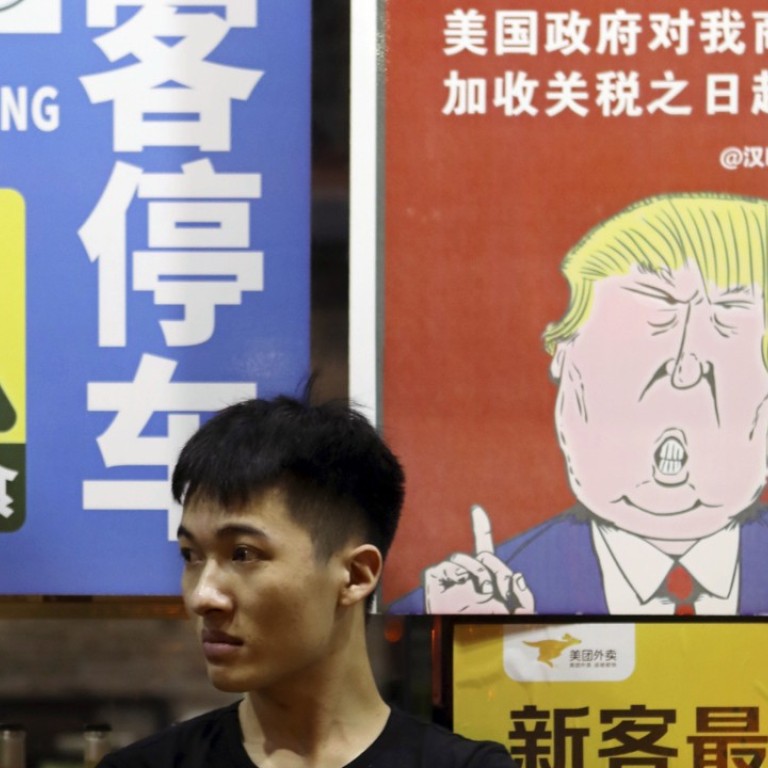
Tariffs are only the obvious weapons of Donald Trump’s trade war against China
Anthony Rowley says the damage to China could extend well beyond the export sector, as apparently intended by the US. With their sizeable investment in China, how Japanese companies respond – by staying put or relocating jobs and capital – will bear watching
Donald Trump’s trade wars are using tariffs as their most obvious weapon against China and, to a lesser extent, other targets of the president’s ire. But in China’s case, there may be secret US weapons flying under the radar, ones that could do long-term harm to the world’s second-largest economy.
China is a major manufacturing assembly base for Japanese companies and some of these firms are becoming concerned to the point where they are reportedly considering the possibility of shifting production of at least some goods to countries which are not the target of Trump’s tariffs.
Since Trump launched his tariff wars earlier this year, economists have speculated that they could affect not only trade in finished goods but also the global supply chains that feed the manufacture of such goods. What is happening now in Japan could mark the first of these secondary effects.
It is too soon to predict that Trump tariffs will provoke an exodus of Japanese and other foreign firms from China (some could simply choose to route China-assembled exports to the US via third countries), but if the US and China dig in for a long war, the chances of it happening will increase.
Japanese industry executives and analysts have begun suggesting that Trump’s tariffs could influence investment location decisions before long. “If tariffs are instituted for a long period, some companies will have to [decide] to move their manufacturing bases out of China,” economist Hiroshi Kubotani, at Nippon Life Insurance Research Institute, told The Japan Times.
The stepping up of US tariffs on imports of Chinese goods reinforces the impression that the once-scattershot Trump administration appears now to have an overarching goal of halting China’s quest to dominate Asia. Trump’s moves may be aimed at a potential Chinese vulnerability – its reliance on trade surpluses and strong foreign exchange reserves to help finance Beijing's overseas power projection.
Some argue that Trump is “shooting himself (or US industry) in the foot” by targeting China’s exports through tariffs, since many US multinationals themselves produce goods in China that are exported to the US. But the strategy is in line with his aim of bringing jobs back to America.
Much Japanese investment in China is in the manufacturing sector and, here again, a large part of that output is exported back to Japan. Thus, any possible retreat from China by Japanese firms that export from there to China could result in some jobs being brought back to Japan, too.
Since Shinzo Abe came to power in 2012, officials of his government have sought to persuade Japanese firms to reduce their dependence on China as a foreign investment destination and to focus instead on Southeast Asian nations such as Vietnam, under what is known as the “China plus one” strategy. And Japanese investment in China did decline for a couple of years from 2015.
Watch: What’s the beef with the ‘Made in China 2025’ strategy?
But in 2015, the Chinese government launched its “Made in China 2025” programme as a means of strengthening manufacturing productivity and stimulating capital investment. As a result, “China is being revalued”, as economist Koji Sako, at Mizuho Research Institute, told the Nikkei Asian Review. Japanese firms, along with others, have consequently been benefiting from the improved productivity in China.
Trump tariffs could reverse this, however.
Seen in this light, the US-China stand-off over tariffs was a conflict waiting to happen, with Japan looking on as something less than an impartial observer. How it will turn out depends on whether Washington or Beijing blinks first. But the “war” is looking less and less like a short skirmish.
Anthony Rowley is a veteran journalist specialising in Asian economic and financial affairs

